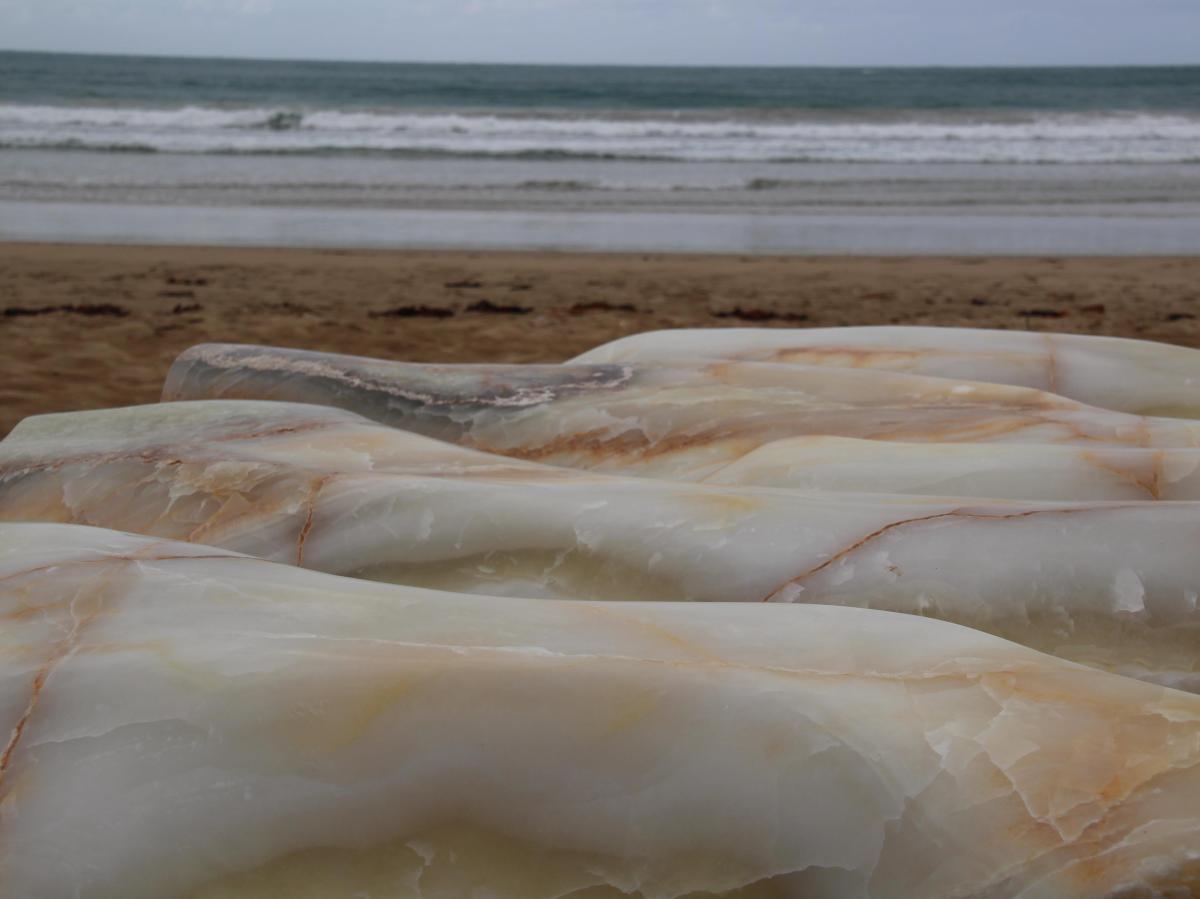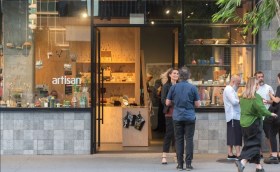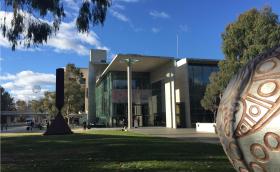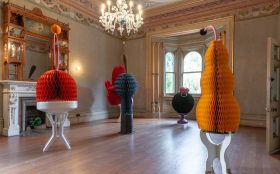Mark Stoner, Geo-Geo Crystal|
All photos: Deborah Stone
The Lorne coastal region is a favourite playground for Victorians and it is to be expected that the region’s biennial sculpture exhibition will reflect and celebrate this environment.
The most successful works resonate with the landscape context but move us to view it differently, exposing layers of meaning through the use of surprising materials.
UK born sculptor Mark Stoner’s magnificent work Geo-Geo Crystal literally carves layers of history out of a piece of caramel-coloured onyx, revealing waves which echo the sand and waves around it. The contrast of such a classically beautiful medium with the raw environment gives originality to Geo-Geo Crystal, a work which invites touch and communion. The exposed layers reveal the history of the onyx and remind us that the sand too is a result of time’s patient workings and contains within it old stories.
Stoner’s work is one of a minority of pieces that actually sit on the sand and use the beach to its full potential.
Another is Matthew Harding’s Within, a mirrored circle which sits on the rocks and places the seascape in its frame. Both Within and Geo-Geo Crystal are outward looking works that direct attention to what is around them rather than arrogating beauty to the object itself.
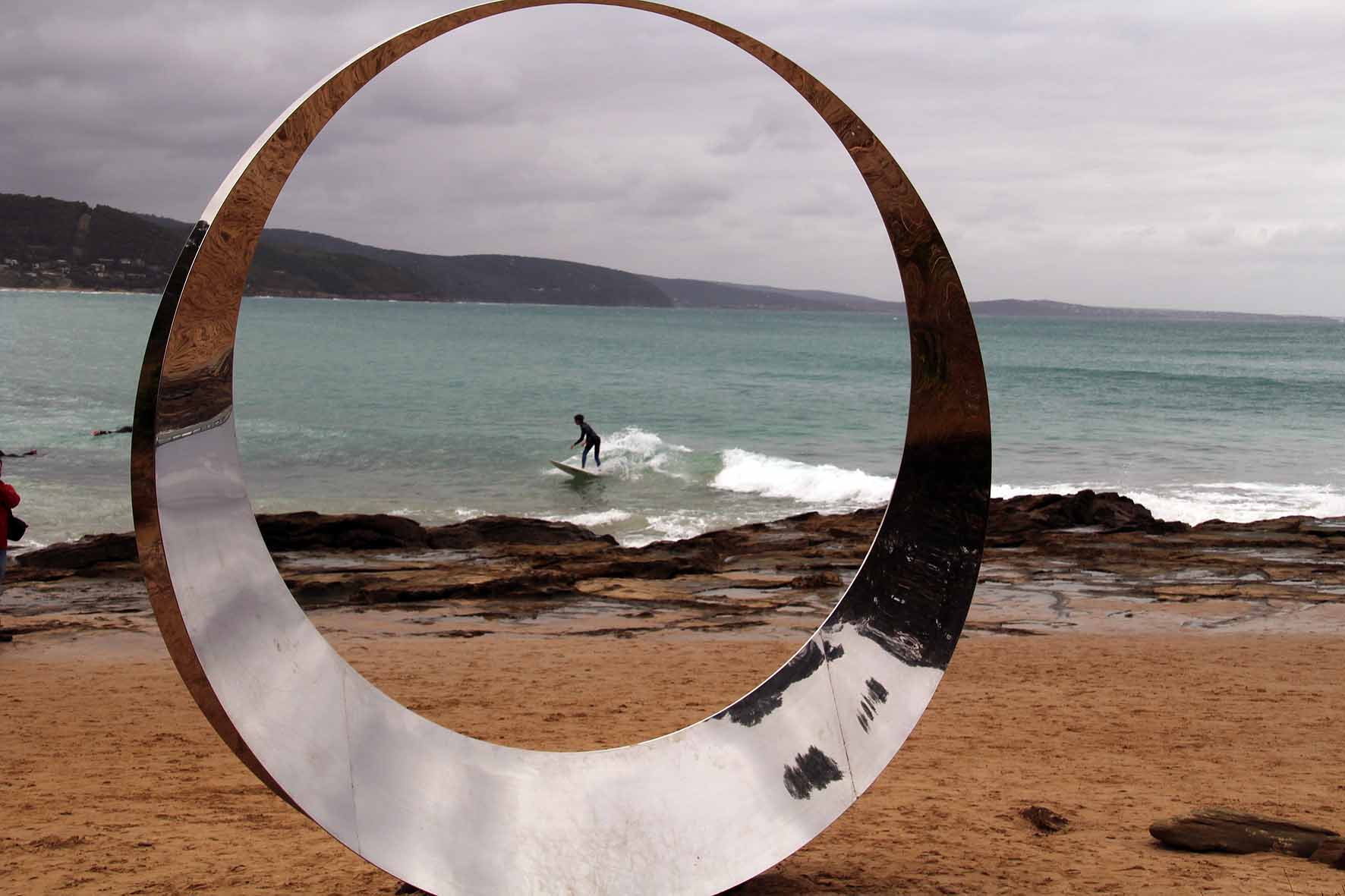
Matthew Harding, Within,
They do so in very different ways – Within by allowing the landscape to fills its void and Geo-Geo Crystal by carving the shape of the beach into the solidity of the stone.
Faustas Sadauskas’s striking geometrical work Grid 11 combines some of the elements of each of these works in an open marble grid that, like Within , frames the landscape beyond and, like Geo-Geo Crystal, plays with our expectations for a luxury material. It has a magnificent use of space and materiality that brings balance to its environment.
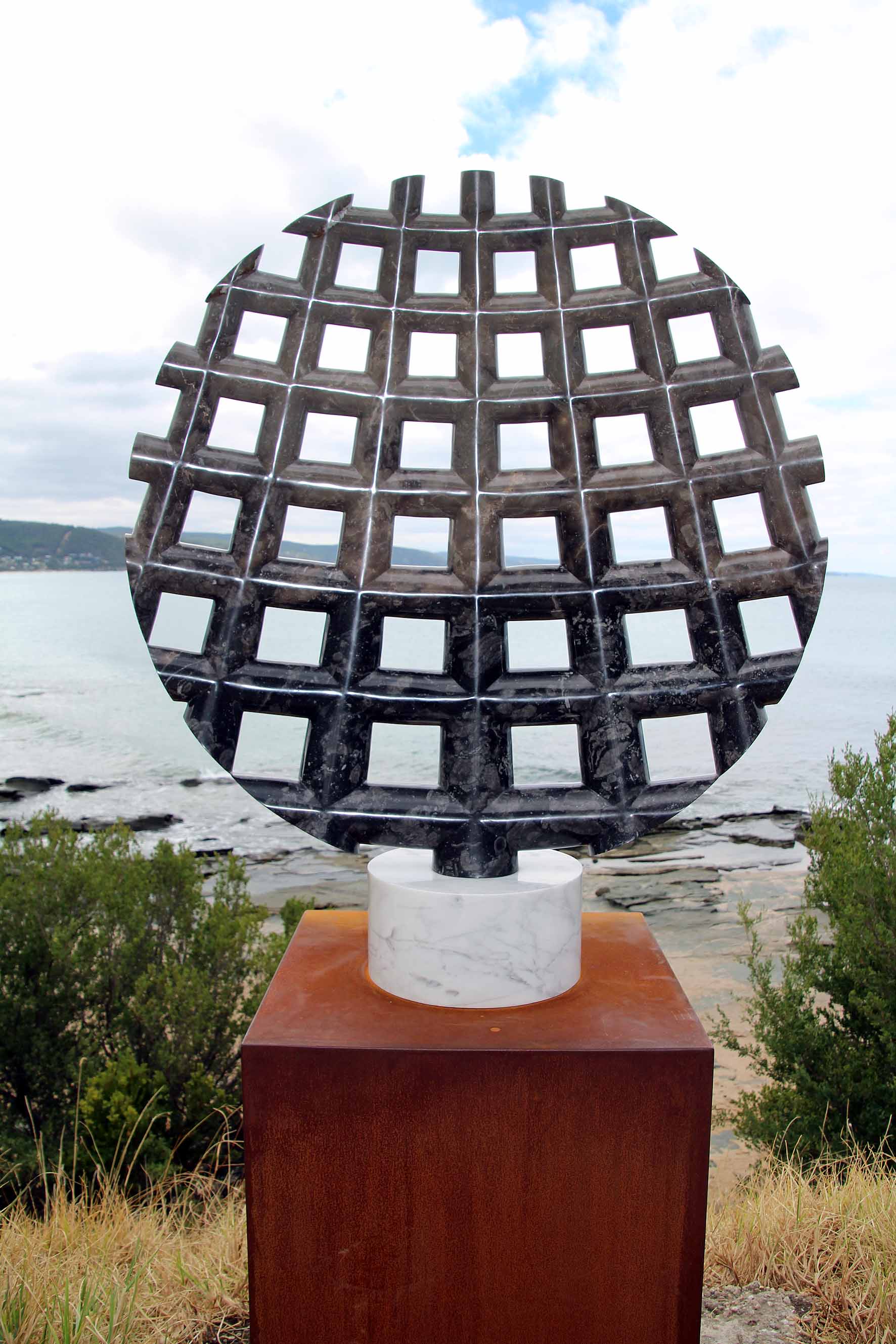
Faustas Sadauskas, Grid 11
These works are fine examples of sculptures that enhance the foreshore environment and give a subtle but strong message about its value. This message is more powerful than more literal political but quite witty works such as Beth Arnold’s Lemon Tree, which confronts us with the disjunction of a backyard lemon tree appearing to grow out of the sand, or Joanne Mott’s also amusing Everlasting, a planting of everlasting daisies which spells out the world ‘Neverlasting’ across a grassy embankment. Both these works draw stark attention to environmental change and degradation but one hardly needs to sit with them for very long to get the point.
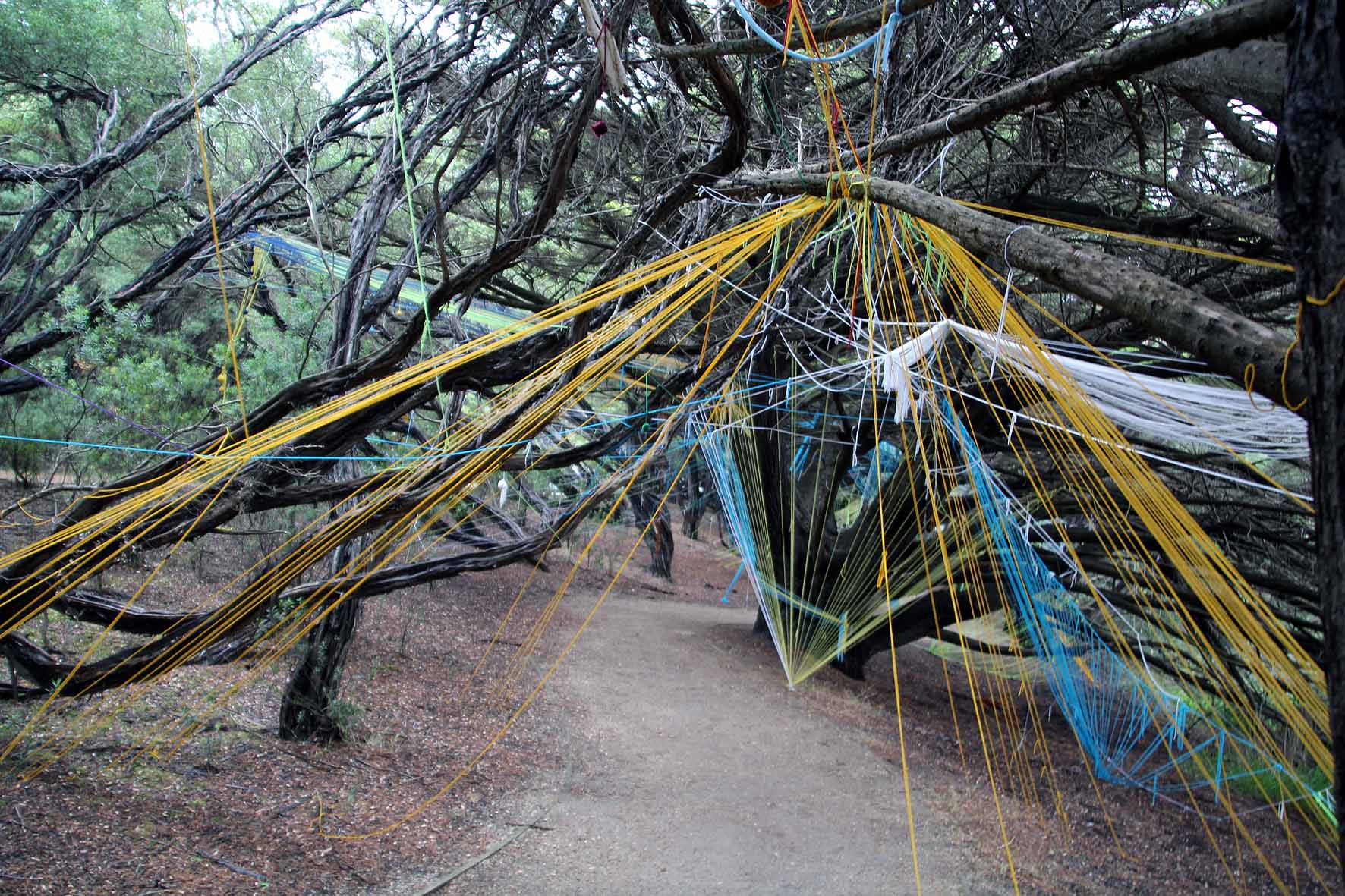
Chaco Kato, Himo Theory 2
A work that does make you want to dwell is Himo Theory 2 by Chaco Kato. ‘Himo’ means ‘string’ in Japanese and Kato’s work is a massive string environment woven through ancient trees that is playful and stunningly beautiful. This is a transformative and memorable work that is all the more beautiful for its ephemeral nature. Spread expansively among several large trees the coloured strings become part of nature’s arboreal sculpture and the viewer who walks through and under them has the sensation of being engulfed and protected, like a child in a cubby.
A secondary theme playing out in the exhibition is history and a number of works refer to Indigenous and colonial histories of the area. The most extraordinary is Writ in which Stephanie Karavailis scatters branches each bearing a fragment of text from colonial records giving clues to the original inhabitants of the region. It is a subtle and beautiful work and another that invites us to spend time in its space and feel the resonances of a place.
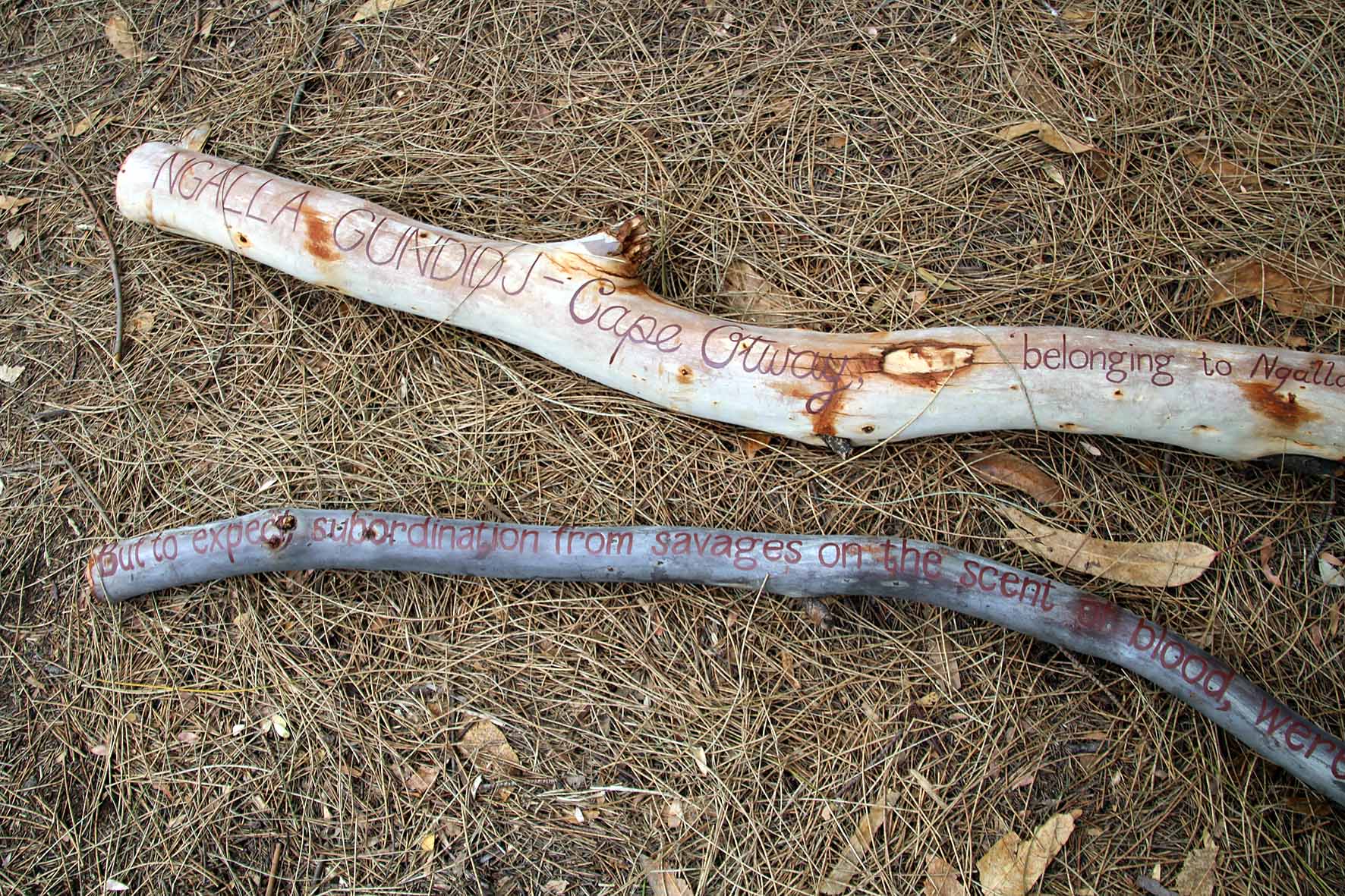
Stephanie Karavailis, Writ
The prizewinning work of the Biennale is an odd choice: a fibreglass polar bear positioned upside down underneath a plastic chair. Louise Paramor wins a $75,000 commission for the work. Entitled The Wild Card #6 (polar) it uses ready-made objects to surprise and disconcert viewers. We are not sure why.
For sheer humour, we prefer Ground by Jason Waterhouse, a concrete mound situated in the car park with a quirky urban wit that provides a lovely counterpoint to the rest of the exhibition. The mound creates an illusion that the curb of the carpark has been pushed out of the ground. Waterhouse’s catalogue note bears quoting, ‘There is the possibility that during the Lorne Sculpture Biennale the strange ground distortion on the Lorne foreshore occurred through the immense arts overload, massive internal cultural pressures tried to push through the earth, distorting with explosive force.’
Rating: 4 out of 5 stars
Lorne Sculpture Biennale
Lorne Foreshore
8 – 30 March

